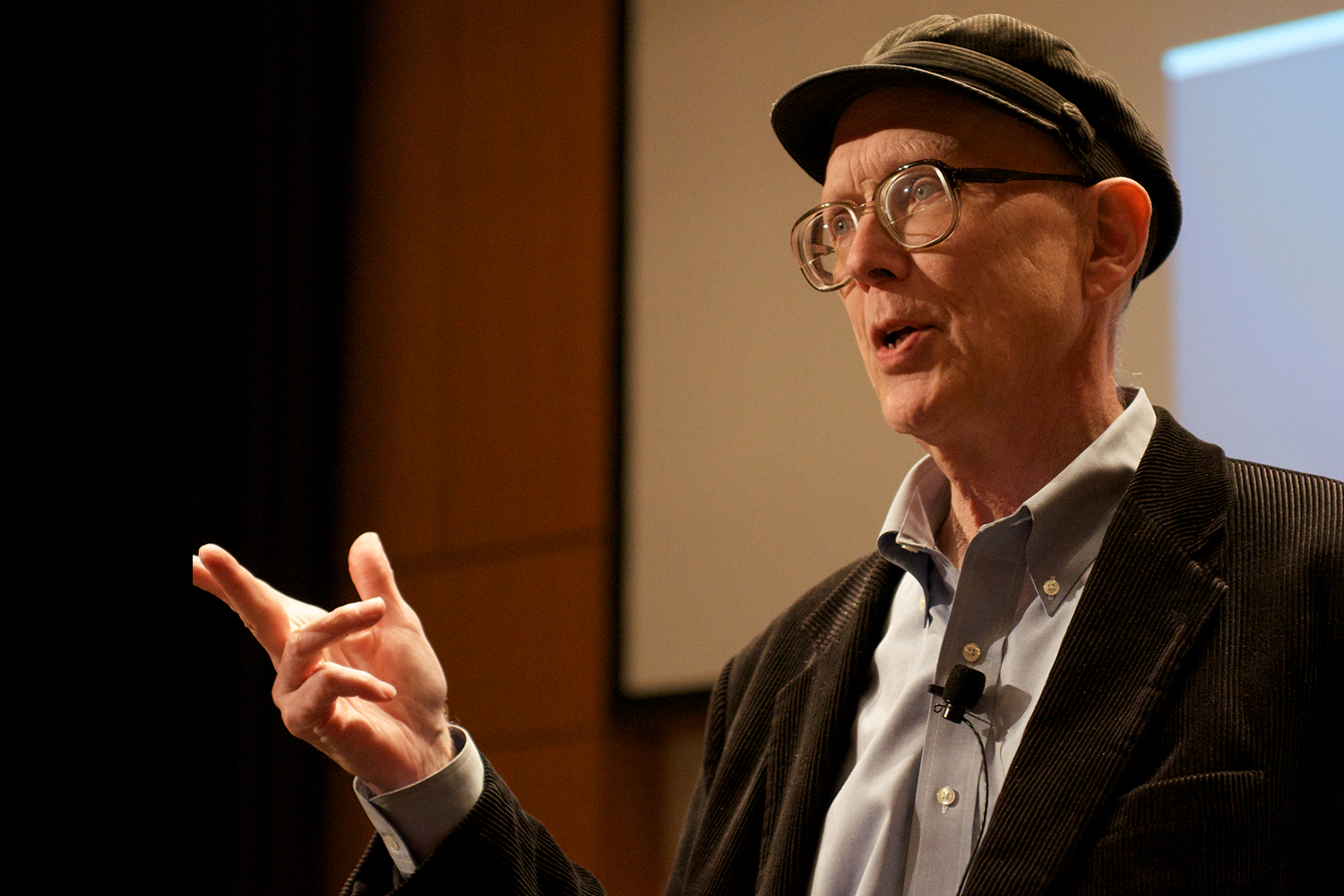
It’s an aphorism that has guided workers from naval engineers to software designers: "Keep it simple, stupid." And simplicity should be a touchstone for scientists as well, argues George M. Whitesides, Ph.D., a Core Faculty member of the Wyss Institute.
That’s because simplicity done right leads to faster scientific progress — especially progress toward problem-solving technologies, Whitesides told a packed crowd of science writers at a conference in Gainesville, Florida, earlier this month.
The occasion was the New Horizons in Science meeting, an annual briefing for science writers on emerging research and issues in science. Whitesides was invited to give the keynote lecture by Ben Patrusky, former executive director of the organization that hosted the meeting, the Council for the Advancement of Science Writing.
"Dr. Whitesides is a great inventor, a brilliant expositor of science, and a generous friend and mentor to members of the science-writing community," Patrusky said.
Whitesides took the opportunity to offer an uncommon way of thinking about science.
Many scientists try to understand complex systems by breaking them down into simpler ones and deducing the scientific principles that govern those simple systems, he said. Whitesides, in contrast, likes to build systems from simple components and see what complex behaviors emerge.
However, the task is tougher than it might seem. "Simplicity should be simple, but it’s not," Whitesides said.
Some of the world’s most useful technologies are built on simple principles and components, Whitesides said. The humble cup is "the greatest invention ever for public health" because you can sterilize water by boiling it and drink it later from the cup, Whitesides told the assembled science writers. The birth control pill works on simple principles and is simple to use, yet it fundamentally changed society.
And binary arithmetic — simple arithmetic based on just two numerals, such as "0" and "1" — underlies the idea of a simple on-off switch. The idea of an on-off switch underlies the transistor, which is essentially an on-off switch that works billions of times without fail. Add photolithography — the ability to transfer geometric shapes on a mask to the surface of a silicon wafer — and you have an integrated circuit. Put enough integrated circuits together and you’ve got a cell phone, which is probably "the most phenomenal bit of human engineering that’s ever happened," Whitesides said.
The idea behind such developments is to stack reliable, predictable, and cheap technologies to form complex and useful technologies. "You go from an idea to a set of applications which have succeeded when users don’t know anything about the ideas that make them up," Whitesides said.
In praise of Pasteur
Whitesides also sang the praises of applied research to the assembled science writers.
In the decades after World War II, he said, an idea took hold in the United States that scientists at universities should pursue fundamental, curiosity-driven research, and that applied research was somehow less valuable.
"I would submit to you that this argument is fundamentally wrong," Whitesides said.
Whitesides invoked no less a name than Louis Pasteur to support his thesis. In the 19th century, Pasteur pursued new ways to protect people from infectious disease, which forced him to investigate what caused the diseases in the first place and how the body warded them off. In the process of inventing vaccines, he founded the fields of microbiology and applied immunology, Whitesides said.
Whitesides described how this approach helped his team develop several important new technologies. For example, while searching for a very inexpensive, disposable diagnostic device for poor parts of the developing world, Whitesides’ team came up with a paper-based device that resembles a postage stamp.
A single drop of blood applied to the paper creates colored spots that can diagnose liver problems, and related devices could diagnose at-risk pregnancies and spot signs of malnutrition, infectious disease, cancer, and more. A nonprofit group called Diagnostics for All is now working to deliver these technologies to the people who need them to save lives. From idea to application, the process took just six years, illustrating the strength and speed of this approach.
"To start with a problem and use that to invent the science that solves that problem is a style, and I argue that it’s a better way of doing it than following your curiosity," said Whitesides, who has published more than 950 research papers and holds more than 50 patents.
Indeed, if your goal is to develop useful technologies, it’s the fastest way to go, he added. And it satisfies a university’s ethical obligation to the taxpayers who fund their research.
"Having an objective does not corrupt the intellectual process," Whitesides said. "It strengthens it."